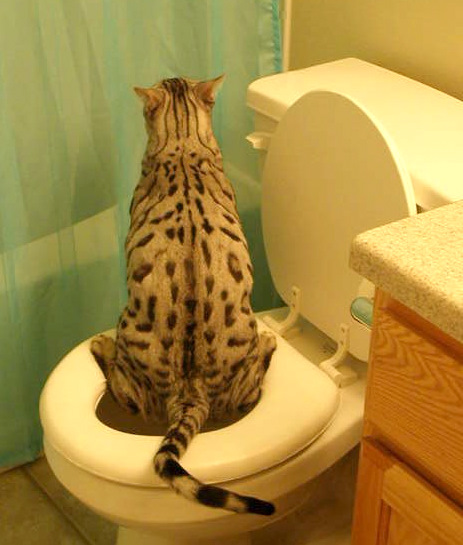The Risks of Disposing Cat Poop in Your Toilet - Precautionary Measures
The Risks of Disposing Cat Poop in Your Toilet - Precautionary Measures
Blog Article
On this page in the next paragraph you can find a bunch of outstanding guidance pertaining to Can You Flush Cat Poo or Litter Down the Toilet?.

Introduction
As feline proprietors, it's important to bear in mind how we get rid of our feline buddies' waste. While it might appear practical to purge pet cat poop down the toilet, this practice can have destructive effects for both the atmosphere and human health.
Alternatives to Flushing
The good news is, there are much safer and much more responsible means to take care of feline poop. Take into consideration the adhering to options:
1. Scoop and Dispose in Trash
The most common technique of disposing of feline poop is to scoop it into a naturally degradable bag and throw it in the garbage. Make sure to use a devoted trash scoop and get rid of the waste quickly.
2. Use Biodegradable Litter
Choose biodegradable cat litter made from materials such as corn or wheat. These trashes are eco-friendly and can be securely thrown away in the trash.
3. Hide in the Yard
If you have a lawn, take into consideration hiding feline waste in a marked area far from vegetable gardens and water resources. Be sure to dig deep adequate to avoid contamination of groundwater.
4. Set Up a Pet Waste Disposal System
Buy an animal waste disposal system particularly created for cat waste. These systems make use of enzymes to break down the waste, decreasing smell and environmental influence.
Health Risks
Along with ecological problems, flushing feline waste can likewise present wellness dangers to humans. Pet cat feces may have Toxoplasma gondii, a parasite that can trigger toxoplasmosis-- a possibly serious ailment, particularly for pregnant ladies and people with damaged body immune systems.
Environmental Impact
Flushing feline poop presents damaging virus and parasites into the supply of water, posturing a significant danger to water environments. These impurities can negatively impact marine life and concession water top quality.
Verdict
Accountable family pet possession expands past providing food and shelter-- it likewise includes appropriate waste monitoring. By avoiding purging pet cat poop down the commode and opting for alternative disposal techniques, we can decrease our environmental footprint and safeguard human wellness.
Why Can’t I Flush Cat Poop?
It Spreads a Parasite
Cats are frequently infected with a parasite called toxoplasma gondii. The parasite causes an infection called toxoplasmosis. It is usually harmless to cats. The parasite only uses cat poop as a host for its eggs. Otherwise, the cat’s immune system usually keeps the infection at low enough levels to maintain its own health. But it does not stop the develop of eggs. These eggs are tiny and surprisingly tough. They may survive for a year before they begin to grow. But that’s the problem.
Our wastewater system is not designed to deal with toxoplasmosis eggs. Instead, most eggs will flush from your toilet into sewers and wastewater management plants. After the sewage is treated for many other harmful things in it, it is typically released into local rivers, lakes, or oceans. Here, the toxoplasmosis eggs can find new hosts, including starfish, crabs, otters, and many other wildlife. For many, this is a significant risk to their health. Toxoplasmosis can also end up infecting water sources that are important for agriculture, which means our deer, pigs, and sheep can get infected too.
Is There Risk to Humans?
There can be a risk to human life from flushing cat poop down the toilet. If you do so, the parasites from your cat’s poop can end up in shellfish, game animals, or livestock. If this meat is then served raw or undercooked, the people who eat it can get sick.
In fact, according to the CDC, 40 million people in the United States are infected with toxoplasma gondii. They get it from exposure to infected seafood, or from some kind of cat poop contamination, like drinking from a stream that is contaminated or touching anything that has come into contact with cat poop. That includes just cleaning a cat litter box.
Most people who get infected with these parasites will not develop any symptoms. However, for pregnant women or for those with compromised immune systems, the parasite can cause severe health problems.
How to Handle Cat Poop
The best way to handle cat poop is actually to clean the box more often. The eggs that the parasite sheds will not become active until one to five days after the cat poops. That means that if you clean daily, you’re much less likely to come into direct contact with infectious eggs.
That said, always dispose of cat poop in the garbage and not down the toilet. Wash your hands before and after you clean the litter box, and bring the bag of poop right outside to your garbage bins.
https://trenchlesssolutionsusa.com/why-cant-i-flush-cat-poop/

We had been brought to that write-up on How to Dispose of Cat Poop and Litter Without Plastic Bags from an acquaintance on another blog. Sharing is caring. Helping others is fun. I truly appreciate reading our article about Don’t flush cat feces down the toilet.
Booking Report this page